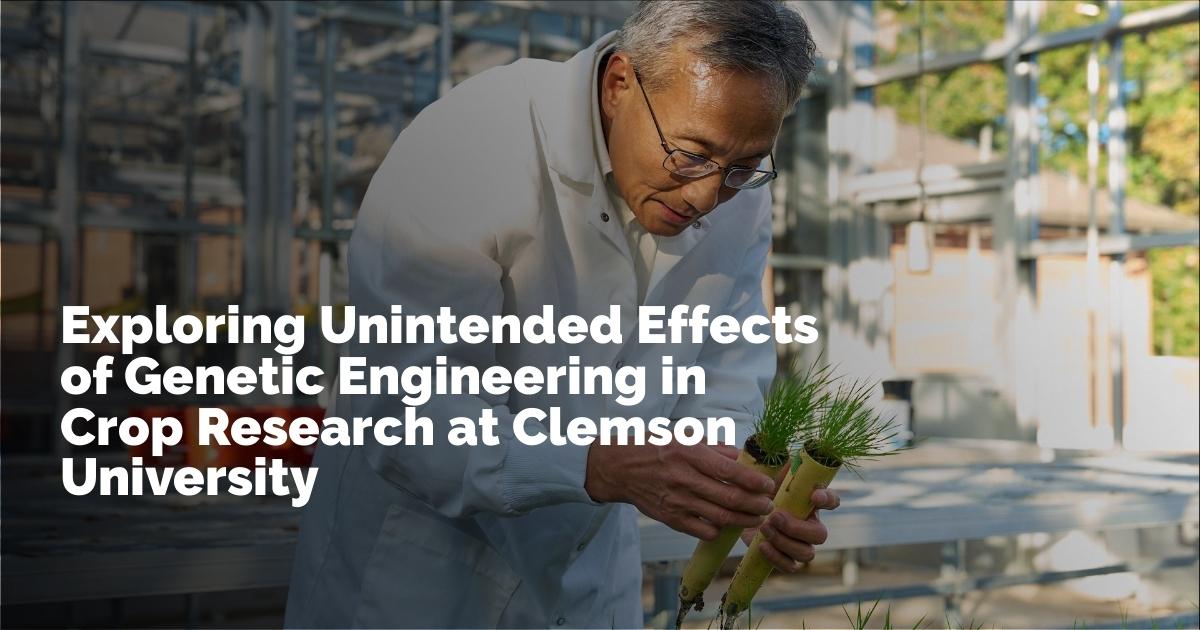Clemson University Professor Explores Unintended Effects of Genetic Engineering in Crops
Genetic engineering stands at the forefront of agricultural innovation, promising to address challenges posed by an ever-increasing global population and diminishing arable land. At the heart of this innovation is enhancing the nutritional quality and yield of food crops, often through the introduction of new genetic traits. However, the unintended repercussions of these manipulations warrant close examination. Professor Hong Luo from Clemson University’s Department of Genetics and Biochemistry is undertaking pivotal research to explore these consequences, supported by a significant grant of $650,000 from the U.S. Department of Agriculture.
Understanding Genetic Modifications in Agriculture
As the world grapples with food sustainability challenges, genetic modification in agriculture emerges as a vital tool. By introducing a transgene, or a foreign gene, from one organism into another, plants can acquire new traits not naturally occurring within their genomes. Such traits might enhance resilience to pests, diseases, environmental stress, or improve nutritional content. Alternatively, gene-editing technologies allow the modification of existing genes to alter specific traits, bypassing the need for foreign genes.
While these technologies hold immense promise, they are not without their concerns. The introduction of foreign genes and manipulation of endogenous gene expressions can sometimes lead to the unintended addition of extraneous DNA into host plant genomes. These occurrences raise questions about potential hazards posed to the host plant, environment, and human health.
Addressing Potential Hazards
Professor Luo's research focuses on addressing these potential hazards by investigating three site-specific DNA recombination systems — Cre, FLP, and PhiC31. These systems are pivotal tools in genetic engineering, used to excise unnecessary DNA from transgenic plants. However, the introduction of certain recombination genes, originally from bacterial sources, has exhibited unforeseen effects on plant growth and development in past studies.
The fundamental goal of Professor Luo’s research is to evaluate these unintended effects. “The unnecessary DNA that gets into the transgenic plants with the target gene need to be removed,” says Luo. By deploying site-specific recombinases, unneeded DNA can be excised from transgenic products, a process the professor aims to make less compromising on the plant’s integrity and environmental safety.
Unveiling the Genetic Dynamics
The study involves a comprehensive analysis of three recombinase genes in two plant species: creeping bentgrass, a significant monocot perennial grass, and Arabidopsis, a well-known dicot model plant. By exploring these contexts, Luo hopes to analyze whether the site-specific recombination systems induce off-target effects on the genomes, epigenomes, and phenotypes of these plants.
Understanding the nature of these effects is critical. They could potentially enhance or hinder plant characteristics, thereby impacting practical applications and raising environmental concerns. Luo aims to map the changes in gene expression across both transgenic and nontransgenic plants, offering insights into which genetic pathways are altered during the genetic engineering processes.
Implications for Future Agricultural Biotechnology
The findings of Professor Luo’s study are poised to inform regulatory bodies about the potential risks and benefits associated with site-specific recombination systems in agriculture. By identifying which systems offer the most promising balance between efficacy and safety, the research could guide future strategies in crop genetic engineering. Moreover, it underscores the importance of addressing the unintended consequences of genetic modification to ensure sustainable agricultural practices that protect environmental health.
출처 : Original Source

